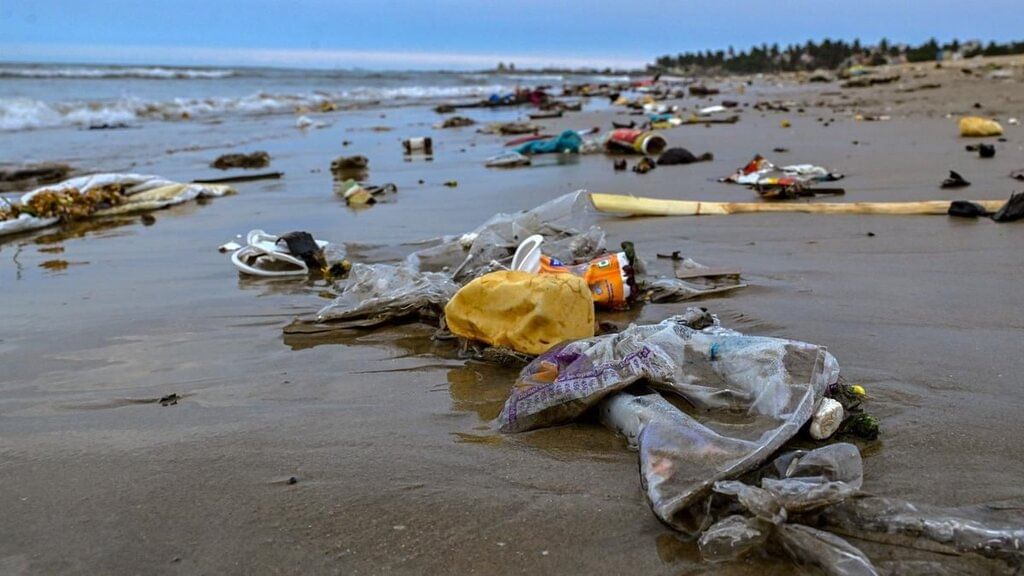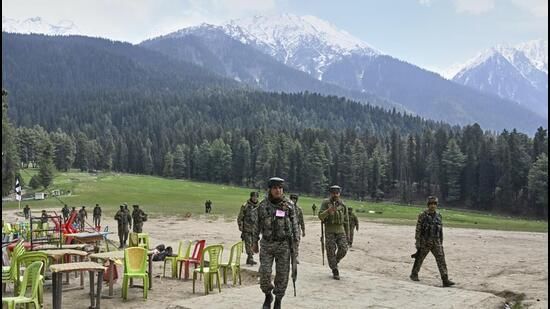UPSC Daily Current Affairs: 30th April 2025 | Current Affairs & Hindu Analysis: Daily, Weekly & Monthly PDF Download
GS2/Governance
Modernising India’s Education System: Government’s Push for 21st Century Readiness
Why in News?
Prime Minister Narendra Modi has announced that the government is actively modernising India’s education system to ensure it meets the demands of the 21st century. This initiative aims to align educational practices with global standards and prepare youth for a rapidly evolving knowledge economy.
- The National Education Policy (NEP) serves as the cornerstone of the transformation.
- Key driving forces include talent, technology, and temperament.
- Digital education infrastructure is being developed to enhance accessibility.
Additional Details
- National Education Policy (NEP): Introduced in 2020, the NEP aims to equip India’s youth with essential skills and resources to foster innovation and global competitiveness.
- Driving Forces: The government emphasizes that India’s future heavily relies on its youth, necessitating preparation for global challenges.
- Infrastructure Development: Key interventions include the establishment of a National Curriculum Framework, which focuses on conceptual clarity, experiential learning, and multilingual education.
- Digital Initiatives: The PM e-Vidya initiative aims to create a unified digital education infrastructure, offering resources in multiple languages to ensure equitable access.
- Research and Innovation: The proposed Anusandhan National Research Foundation (ANRF) will facilitate research growth, with significant increases in research parks and development cells within higher education institutions.
- Global Engagement: Indian institutions are expanding globally with campuses abroad and inviting foreign universities to establish presences in India.
- AI in Education: The government’s IndiaAI Mission focuses on integrating AI to personalize learning experiences and improve educational outcomes.
This comprehensive educational reform aims to create a dynamic, inclusive, and future-ready ecosystem that not only prepares Indian youth for global challenges but also positions India as a leader in innovation and research on the world stage.
GS3/Environment
A Powerful Judicial Remedy for Waste Management
 Why in News?
Why in News?
India's plastic pollution crisis has escalated to alarming levels, making it the largest contributor to global plastic emissions, as reported in a recent study published in Nature. With an estimated 9.3 million tonnes released annually, nearly 20% of the world's emissions, India's plastic waste issues reflect a combination of consumer behavior, systemic mismanagement, and significant failures in monitoring and accountability.
- India's reported plastic waste generation is significantly underestimated.
- The country relies heavily on uncontrolled dumpsites rather than sanitary landfills.
- Local governance structures are tasked with waste management but lack accurate data and infrastructure.
- The Indian judiciary plays a crucial role in enforcing environmental protections.
Additional Details
- Data Discrepancies: The official figure for plastic waste generation is 0.12 kg per capita per day, yet studies suggest the actual figure could be as high as 0.54 kg, highlighting a serious underestimation due to unreported rural waste and informal recycling.
- Infrastructure Challenges: India's waste management infrastructure is marked by a ratio of 10:1 between uncontrolled dumpsites and sanitary landfills, particularly affecting ecologically sensitive areas.
- Legal Framework: Local governance bodies, including urban municipal bodies and rural panchayats, must be empowered with better resources and accurate data systems to fulfill their mandates effectively.
- Judicial Activism: The Supreme Court has utilized the principle of continuing mandamus to ensure compliance with environmental regulations, which could serve as a framework for addressing waste management issues.
India is at a pivotal moment, where its status as a major plastic polluter necessitates urgent action and innovative solutions. Addressing the crisis will require enhanced transparency, empowered local governance, and rigorous judicial oversight. A coordinated effort combining reliable data, infrastructure investment, and legal enforcement is essential for transforming waste management practices and paving the way for sustainable development.
GS3/Economy
CSR Spending in India
Why in News?
In the fiscal year 2023-24, India's listed companies reported a significant increase in their Corporate Social Responsibility (CSR) expenditures, amounting to Rs 17,967 crore. This represents a 16% growth compared to the Rs 15,524 crore spent in the previous year, 2022-23. According to the PRIME Database report, this rise in CSR spending correlates with an 18% increase in the companies' net profits.
- CSR spending in India reached Rs 17,967 crore in 2023-24.
- This figure is 16% higher than the previous year’s spending.
- The increase in CSR spending is linked to an 18% rise in net profits of companies.
Additional Details
- Corporate Social Responsibility (CSR): CSR is a self-regulating business model that enables companies to be socially accountable to themselves, stakeholders, and the public. It encompasses initiatives that examine and take responsibility for the company's social and environmental impacts.
- India is the first country to mandate CSR spending effective April 1, 2014, under Section 135 of the Companies Act, 2013, establishing a structured framework for CSR activities.
- CSR provisions apply to companies that meet any of the following criteria in the preceding financial year:
- Net worth of at least Rs 500 crore,
- Turnover of at least Rs 1,000 crore, or
- Net profit of at least Rs 5 crore.
- Companies are obligated to spend a minimum of 2% of their average net profits from the last three financial years on CSR activities. Newly incorporated companies should calculate this based on the profits of previous years.
Eligible CSR Activities
- Eradicating hunger and poverty.
- Promoting education and gender equality.
- Combating diseases (e.g., HIV/AIDS).
- Environmental sustainability initiatives.
- Contributions to relief funds (e.g., PM CARES, PM Relief Fund).
- Welfare programs for disadvantaged groups.
If a company's CSR expenditure exceeds Rs 50 lakh, it is required to form a CSR committee that includes at least three board members, with one being independent.
Consider the following statements with reference to Corporate Social Responsibility (CSR) rules in India:
- 1. CSR rules specify that expenditures benefiting the company directly or its employees will not be considered as CSR activities.
- 2. CSR rules do not specify a minimum spending threshold on CSR activities.
Which of the statements given above is/are correct?
- Options: (a) 1 only* (b) 2 only (c) Both 1 and 2 (d) Neither 1 or 2
This structured approach to CSR not only encourages companies to contribute to societal needs but also ensures that their activities are aligned with broader social and environmental goals.
GS3/Environment
High Temperatures and Mango Production
 Why in News?
Why in News?
Recently, there has been a significant decline in mango harvests in India, prompting concerns over the quality and pricing of this beloved fruit. Key issues include the early arrival of mangoes in markets, reduced sweetness, increasing costs, and the shorter shelf life of mango pickles.
- Rising temperatures are causing mango trees to flower earlier than usual.
- Heat stress is leading to mangoes that are less sweet and have a shorter shelf life.
- High temperatures result in premature fruit drop and uneven ripening.
- Intense heat can cause physical damage to mangoes, reducing their market value.
- Disruption of pollination affects yield consistency.
Additional Details
- Early Flowering and Fruiting: Rising temperatures cause mango trees to flower earlier than usual, disrupting their natural growth cycles. Example: Farmers report that mangoes are arriving too early in the market, which affects planned harvest timelines.
- Reduced Sweetness and Shelf Life: Heat stress diminishes sugar accumulation in mangoes, making them less sweet and affecting the shelf life of mango pickles. Example: Anecdotal evidence suggests that mango pickles do not last throughout the year.
- Fruit Drop and Uneven Ripening: High temperatures lead to premature fruit drop and uneven ripening, impacting overall fruit quality. Example: In varieties like Alphonso, spongy tissue disorder is increasingly observed.
- Sun Scalding and Physical Damage: Intense heat can cause sunburn-like damage on mango skins, diminishing their visual appeal and market value. Example: Farmers have noted sun scalding of mangoes during heatwaves.
- Disruption of Pollination and Budding Cycles: Extreme weather events can disrupt the timing of flowering and fruit setting, negatively affecting mango yields.
The contrast between anecdotal reports and official productivity data regarding mango yields can be attributed to several factors, including regional climate variations, differences in measuring parameters, time lags in data reporting, and advancements in farming practices.
Resilience and Adaptability of Mango Trees
- High Genetic Diversity: Mango trees possess substantial genetic variation across cultivars, enhancing their adaptability to changing climates. Example: Varieties like Dasheri and Banganapalli show better resilience to heat stress.
- Physiological Mechanisms: Features such as deep root systems and efficient water usage enable mango trees to withstand drought and high temperatures. Example: In Telangana, mango trees are better equipped to handle prolonged dry spells than other fruit crops.
- Compatibility with Heat and Drought: Mangoes thrive in tropical climates with long dry seasons, making them well-suited to certain aspects of climate change.
- Potential for Climate-Resilient Breeding: Genetic resources in mangoes are ideal for developing varieties that are resistant to climate stressors.
- Adaptive Growth Patterns: Being perennial trees, mango plants can modify their flowering and fruiting cycles in response to climatic changes.
Government Initiatives
- Promotion of Climate-Resilient Practices: The Indian government supports the adoption of climate-smart agricultural methods through initiatives like the National Mission on Sustainable Agriculture (NMSA).
- Agro-Weather Advisory Systems: Implementation of advisory services by the Indian Meteorological Department and state agricultural departments to assist farmers in adapting to changing weather patterns.
- Research and Development: Support for breeding heat-resistant and drought-tolerant mango varieties through institutions like the Indian Council of Agricultural Research (ICAR).
Looking ahead, it is crucial to focus on developing climate-resilient mango varieties and promoting efficient agricultural practices to ensure consistent yields and quality in the face of climate change.
GS3/Environment
How Locusts Form Massive Swarms
 Why in News?
Why in News?
A recent study by the Max Planck Institute of Animal Behavior has highlighted that locusts do not behave like gas particles; instead, they make cognitive decisions based on their perception of nearby motion.
- Locusts can travel up to 150 km/day and consume food equivalent to their body weight daily.
- A single swarm of locusts can consume food sufficient for 35,000 people.
- In India, locust management is overseen by the Locust Control and Research (LC&R) organization.
- The 2019-2022 desert locust outbreak was one of the most severe in decades, affecting regions like Pakistan and East Africa.
Additional Details
- Locust Behaviour: Traditionally, it was believed that locusts moved as a collective by aligning with their neighbors. However, the new research indicates that they make independent decisions based on visual cues.
- The study introduced a new mathematical model using neural ring attractor networks, demonstrating that locusts coordinate their movements through decentralized decision-making.
- This enhanced understanding of locust swarm behavior is crucial for developing effective early intervention strategies.
Overall, the insights from this research could significantly improve the prediction and management of locust swarms, which are essential for ensuring food security in affected regions.
UPSC 2023
Which of the following organisms perform waggle dance for others of their kin to indicate the direction and the distance to a source of their food?
- (a) Butterflies
- (b) Dragonflies
- (c) Honeybees*
- (d) Wasps
GS3/Defence & Security
Induction of 26 New Rafale M Aircraft
 Why in News?
Why in News?
India and France have finalized a government-to-government agreement valued at $7.4 billion (approximately ₹63,000 crore) for the procurement of 26 Rafale Marine fighter jets intended for the Indian Navy. This comes in the wake of the earlier induction of 36 Rafale jets into the Indian Air Force, which began in 2021.
- The deal enhances India's naval capabilities with advanced fighter jets.
- Previous inductions include 36 Rafale jets for the Air Force, demonstrating a strategic investment in aerial combat power.
Additional Details
- Naval Aviation: This term encompasses the deployment of military aircraft by naval forces, which operate from aircraft carriers, helicopter-equipped ships, or land bases to facilitate maritime operations.
- Key Roles of Naval Aviation:
- Fleet Air Defence: Protects naval forces beyond the reach of land-based air support.
- Strategic Power Projection: Enables global air power without reliance on land bases.
- Anti-Surface Warfare: Engages enemy vessels using air-launched munitions.
- Support for Amphibious Warfare: Aids in marine landings and inland missions.
- Mine Countermeasures: Identifies and neutralizes enemy sea mines with aerial assets.
- Aircraft Carrier: A warship that serves as a floating airbase, featuring a full-length flight deck and facilities to support, arm, deploy, and recover aircraft.
Naval aviation plays a crucial role in maintaining sea control, supporting joint operations, and projecting power far from home bases. The induction of the Rafale M jets is expected to significantly enhance India's maritime strike capabilities and overall military readiness, reinforcing the country’s strategic position in the Indian Ocean region.
GS3/Economy
Growth Pangs: On Industrial Activity
Why in News?
India’s average Index of Industrial Production (IIP) for fiscal year 2025 has dropped to 4%, marking the lowest level in the past four years and indicating a clear slowdown in industrial growth.
- Global economic uncertainty is affecting India's external trade and exports.
- Lower domestic consumption demand is impacting industries reliant on the domestic market.
- Reduced private capital expenditure (Capex) is hindering industrial growth.
- Key industrial sectors like mining, manufacturing, and electricity are experiencing slower growth.
- Weak goods exports, especially from MSMEs, are a concern.
Additional Details
- Global Economic Uncertainty: The uncertain global economic outlook is impacting India’s external trade, leading to a slowdown in goods exports. For instance, India’s goods exports grew at a slower pace in FY25, straining industrial output.
- Lower Domestic Consumption Demand: Sluggish growth in domestic consumption has affected industries such as consumer goods, with consumer non-durables showing a negative growth of -1.6% in FY25, despite a decline in retail inflation.
- Reduced Private Capital Expenditure: A decline in private sector investment has negatively impacted industrial growth. Although capex lending rates have decreased, they haven't spurred significant investment due to cautious private sector sentiment.
- Decline in Key Industrial Sectors: Sectors like mining and manufacturing have seen slower growth, with mining growth dropping from 7.5% in FY24 to 2.9% in FY25, directly affecting overall industrial output.
- Weak Goods Exports: Limited growth in India’s goods exports, particularly from the MSME sector, highlights challenges in expanding global market share, especially with major trading partners.
Rural Consumption Challenges
- Lingering Effects of High Food Inflation: Despite a decrease in retail inflation, the residual impact of high food prices continues to limit rural households' disposable income.
- Reduced Farm Incomes: Factors such as erratic weather and rising input costs have negatively impacted farm incomes, limiting purchasing power.
- Limited Impact of Inflation Reduction: Price drops have not been substantial enough in rural areas to translate into significant consumption gains, particularly for low-income families.
- Structural Economic Challenges: Rural India faces ongoing challenges such as inadequate infrastructure and low wages, restricting consumption potential.
Performance of Industrial Sectors in FY25
| Sector | FY24 Growth (%) | FY25 Growth (%) |
|---|---|---|
| Mining | 7.5% | 2.9% |
| Manufacturing | 5.5% | Declined slightly |
| Electricity | 7% | 5.1% |
Government Steps to Boost Investment
- Enhance Domestic Demand: The government can stimulate consumption by investing in rural infrastructure and public services, which will encourage private sector production.
- Strengthen Trade Access for MSMEs: Finalizing trade agreements can improve market access for MSMEs, enhancing their competitiveness.
- Expand Credit Support: Providing low-interest loans and simplifying compliance can ease the operational burden on small enterprises.
In conclusion, addressing these challenges through targeted government measures could revitalize industrial growth and enhance rural consumption, ultimately benefiting the broader economy.
GS2/Polity
SC Upholds Use of Spyware, Says National Security Paramount in Pegasus Case
 Why in News?
Why in News?
The Supreme Court, during hearings related to the use of spyware, asserted that while having spyware for national security is acceptable, the critical issue lies in its application against individuals, which will be thoroughly examined.
- The Supreme Court emphasizes the importance of national security over the disclosure of specific spyware usage.
- Spyware is defined as malicious software designed to secretly gather data from users' devices.
Additional Details
- Spyware: A type of malware that collects sensitive information such as browsing history, financial details, and login credentials, often leading to severe risks like identity theft and data breaches.
- Common Types of Spyware:
- Adware: Monitors user activity to display targeted ads.
- Infostealer: Gathers specific data and chat logs from users.
- Keyloggers: Records keystrokes to capture usernames, passwords, and messages.
- Rootkits: Provide hidden access to a system, often undetectable.
- Red Shell: Tracks user activity during PC game installations.
- System Monitors: Captures emails, websites visited, and keystrokes.
- Tracking Cookies: Follow user behavior across the web.
- Trojan Horse Virus: Disguises itself as legitimate software to deliver spyware.
- How Spyware Works:
- Infiltration: Installed through apps, malicious websites, or attachments.
- Monitoring and Data Capture: Tracks user behavior, captures keystrokes, and takes screenshots.
- Transmission or Sale: Sends captured data to attackers or sells it on the dark web.
- The Supreme Court acknowledged the right to privacy, indicating that individuals suspecting their phones were hacked deserve to know the truth.
- Petitions were filed by journalists and activists alleging government surveillance using Pegasus spyware, raising concerns about potential abuse of power.
- The Court appointed a technical committee to investigate the allegations but refused to make the findings public due to national security concerns.
- In August 2022, the Supreme Court noted that while malware was found on several devices, it could not conclusively link them to Pegasus spyware.
In conclusion, the Supreme Court's ruling highlights the balance between national security and individual privacy rights, emphasizing the need for scrutiny in the use of surveillance tools against citizens.
GS2/International Relations
Kashmir, Terrorism, and India's Long-Term Security Strategy
 Why in News?
Why in News?
Recent terrorist attacks on tourists in Pahalgam, Jammu and Kashmir, underscore the ongoing threat posed by Pakistan's deep state. These attacks are part of a broader strategy to undermine democratic progress and development in the region.
- The historical context of the Vietnam War offers parallels to contemporary challenges faced by India.
- India's long-term strategy for Kashmir includes targeted security operations, moderation in force usage, and promoting democratic participation.
- Pakistan's recent actions reflect its desperation in response to India's evolving security strategy.
Additional Details
- Historical Parallels: The evacuation of American personnel from Saigon in 1975 signifies strategic misjudgments that resonate with current geopolitical dynamics.
- End of Soft Separatism: The return of Sheikh Abdullah to democratic politics in Jammu and Kashmir marks a significant shift from prolonged separatism.
- India's Strategic Adaptations: The formation of specialized units like the Rashtriya Rifles and the modernization of counter-terrorism strategies exemplify institutional resilience.
- Democratic Engagement: Frequent elections and civil service involvement reflect a commitment to democratic principles, contrasting sharply with Pakistan's unstable governance.
In conclusion, India’s measured response to terrorism should be viewed not as aggression but as a necessary defense of peace. The international community can learn valuable lessons from India’s emphasis on institutional strength, democratic commitment, and strategic security measures.
GS3/Environment
Greenhouse Gases Emissions Intensity (GEI) Targets
Why in News?
The Environment Ministry has published the Draft Greenhouse Gas Emissions Intensity (GEI) Target Rules for 2025, which are part of the government's initiative to curb greenhouse gas emissions (GHGs) from energy-intensive sectors.
- The GEI measures GHG emissions per unit of output, such as per tonne of product like cement or aluminum.
- Major greenhouse gases include carbon dioxide (CO2), methane (CH4), nitrous oxide (N2O), and synthetic fluorinated gases (e.g., CFCs, HCFCs).
- Reducing GEI is essential for mitigating climate change and promoting cleaner industrial technologies.
Additional Details
- Target Setting for Industries: Specific emission intensity reduction targets have been established for sectors such as pulp and paper for the periods 2025-26 and 2026-27.
- Baseline Emissions & Gradual Reduction: A baseline for GHG emissions for the year 2023-24 has been set, with targets for gradual reduction over subsequent years.
- Carbon Credit Trading Scheme (CCTS): Industries that meet GEI targets will earn carbon credits, which can be traded in India's carbon market, while non-compliant industries will need to purchase credits or incur penalties.
- Sector-Specific Applicability: The targets apply to 13 aluminium plants, 186 cement plants, 53 pulp and paper plants, and 30 chlor-alkali plants.
- Penalties & Incentives: Industries that do not comply must buy carbon credits or face penalties, with encouragement for adopting clean technologies, such as using biomass instead of coal.
- Alignment with Paris Agreement: These rules align with India's commitment to achieve a 45% reduction in emissions intensity of GDP by 2030, relative to 2005 levels.
- Monitoring & Compliance: The Bureau of Energy Efficiency (BEE) will oversee the carbon credit market and ensure compliance through regular progress reports from industries.
This initiative is crucial for India's ongoing climate commitments and efforts to transition towards sustainable industrial practices.
|
51 videos|5377 docs|1138 tests
|
FAQs on UPSC Daily Current Affairs: 30th April 2025 - Current Affairs & Hindu Analysis: Daily, Weekly & Monthly
| 1. What are the key initiatives taken by the Indian government to modernize the education system for 21st-century readiness? |  |
| 2. How does the government plan to ensure that students are equipped with skills relevant to the modern job market? |  |
| 3. What challenges does India face in implementing the modernized education system? |  |
| 4. How does modernizing the education system impact India's economic growth? |  |
| 5. What role do technology and digital learning play in the government's vision for education in India? |  |





















